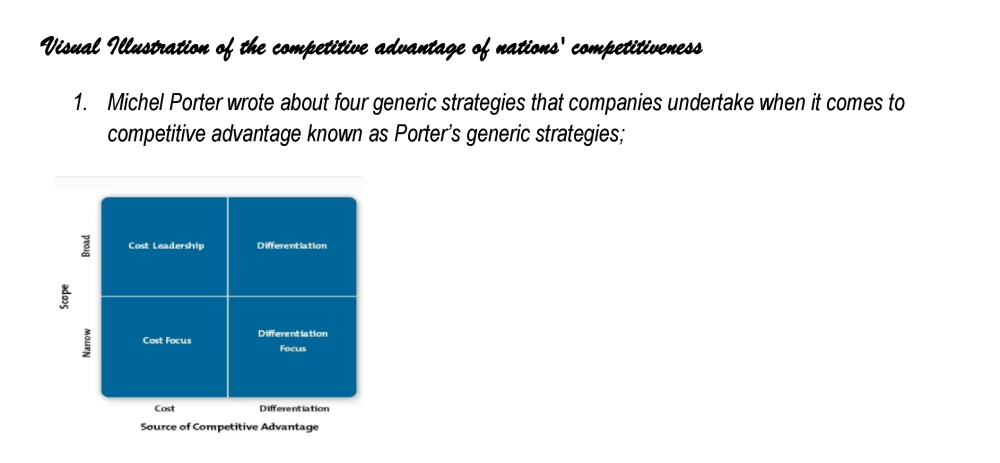Companies achieved international leadership styles through innovations that create competitive advantage by perceiving an entirely new market or serving market segments ignored by others. Innovations are mundane and incremental depending more on the accumulation of small insights and advances than on a single major technological breakthrough Information plays a large role in the process of innovation and improvement. In a competitive globe, the competitive advantages of nations are achieved through a highly localized process.
Differences in national values, culture, economic structures, institutions, and histories all contribute to competitive success. Ultimately nations succeed in particular industries because their home environment is the most forward-looking, dynamic, and challenging. And the labor costs, interest rates, exchange rates, and economies, the words of the day are mergers; alliance, strategic partnerships, collaboration, and supranational globalization are the important determinants of competitiveness. Managers are pressing for government support. These approaches in favor of both companies and governments are flawed.
Patterns of National Competitive Success:
Michael E. Porter in his paper” The Competitive Advantage of Nations” studied ten nations- the United Nations, Japan, and Germany- economic position for four years. He grouped three nations among the world-leading industrial powers. The other nations represent a variety of population sizes, government policies towards industries, geographical sizes, and locations.
IJOART. He studied the nations in two parts. The first identified all industries in which the nation’s companies were internationally successful. We defined a nation’s industry as internationally successful if it possessed a competitive advantage relative to the best worldwide competitors. A nation was considered the home base for a company if it was either a locally owned, indigenous enterprise or managed autonomously although owned by a foreign company or investors.
In the second part of the study, the history of competition in particular industries. The sample of nations and industries offers a rich empirical foundation for the development and testing of the new theory of how countries gain competitive advantage.
How Companies Succeed in International Market:
Companies achieve competitive success through acts of innovation. Innovations can be manifested in a new marketing approach or a new way of conducting training. It often involves ideas that are not even “new”—ideas some innovations created a competitive advantage by perceiving an entirely new market opportunity or by serving a market segment that others have ignored. The innovations which yield competitive advantages anticipate both domestic and foreign needs. Information plays a large role in the process of innovation and improvement. Sometimes it comes from a simple investment in research and development or market research.
Like this entry?
-
About the Entrant
- Name:Salim Javed
- Type of entry:individual
- Software used for this entry:No
- Patent status:patented








